- Home
- Christopher Moore
Sacre Bleu: A Comedy d'Art Page 21
Sacre Bleu: A Comedy d'Art Read online
Page 21
“Is the Colorman working with a girl?” asked Henri. “Do you see a girl?”
“Yes. Not with the Colorman, but nearby. She is inside the station, but it’s very early, and there is almost no one else around.”
“What does she look like?”
“I can’t see. She is holding an umbrella so I can’t see her face. She’s small, thin. From her dress and posture I would say she is fairly young.”
“Can you move closer?” said the Professeur. “See if you can get a look at her.”
“I set down the easels and walk toward her. She peeks around her umbrella, then hurries away, out toward the rue de Rome exit. As she steps into the rain she has to lift the umbrella. Yes, she’s young. Pretty.”
“Do you know her?”
“Can you touch her bosoms?” asked Henri.
“Monsieur Toulouse-Lautrec, please,” said the Professeur.
“What? It’s an illusion, there are no rules of propriety.”
“It’s Margot,” said Lucien. “The girl who Monsieur Renoir has been painting at the Moulin de la Galette. She is leaning over, talking to the Colorman behind her umbrella. They leave together, down the boulevard. I will try to follow them.”
Paris, 1877, Gare Saint-Lazare
“I AM THE PAINTER MONET,” MONET ANNOUNCED TO THE STATION MANAGER. The usher, who had presented Monet’s calling card, stood by the manager’s desk, frozen in a half bow to the grandiose gentleman. Lucien stood in the doorway, drooling, as he had been instructed, and haphazardly juggling the three easels, Monet’s paint box, and a broad wooden case for carrying wet canvases.
“I am the painter Monet. I have decided to paint your station.” Claude Monet—Pierre-Auguste Renoir, 1875
Monet wore a velvet jacket and a silk waistcoat bound with a gold watch chain; lace cuffs draped his wrists; a black silk cravat was tied at his throat, pinned with a pearl stickpin—every inch the gentleman, dandy, and master of his universe. His lapel bulged a bit, betraying half a baguette that he had concealed in his coat, the remains of the breakfast Mère Lessard had sent along to him, since he had no money for food.
“I have decided to paint your station,” said Monet. “I must admit, I was torn between Gare du Nord and your station, but I believe your station has more character, so it is Gare Saint-Lazare that shall be honored.”
The station manager, a thin, nervous, balding man—a man built for bureaucracy—was flustered. He stood at his desk in his suit of yellow ochre plaid and began to fuss with papers, as if something on his desk might confirm his station’s worthiness.
“This is my assistant, Lucien,” Monet announced, turning on a heel and leading the way out of the office into the great chamber of the station. “He is a simpleton, but I allow him to be my porter so he does not starve. Don’t be alarmed if you see him eating paint. I allow him half a tube a day.”
“Bonjour,” drooled Lucien.
The station manager and the porter nodded uncomfortably to the boy, then skated by him in the doorway as if he might be poisonous to the touch and followed Monet onto the platform under the grand clock.
“I wish to paint the steam and smoke, the fury of the engines preparing to depart. I will paint fog, you see, capture on canvas that which has never been captured.”
The station manager and the porter nodded in unison, but didn’t move otherwise and seemed to have no intention of doing so, as if they were overwhelmed by the painter’s bearing.
“Lucien, set up my easels,” said Monet, pointing. “There! There! There!”
The painter’s barking of orders seemed to wake the station manager from his daze. Of course, if there was going to be steam, the locomotives would need to be fired. “Bring engine number twelve under the roof. Tell the engineers down the line to get their engines up to steam.”
“I will need them to vent it at once, if they can,” said Monet.
“Tell them to vent the steam on my signal,” the station manager instructed the porter, who hurried off down the train tracks. To Monet, the manager said, “Monsieur, may I suggest that you only have one train at a time release its steam. On a wet day like today, the entire station might be so filled with fog you couldn’t see to paint.”
“Fine, I want a storm of steam. Turner’s ghost should stir at the storm I capture today,” said Monet. “Let me know when all is ready.” He took his palette from his paint box and began to load it with color, while Lucien set blank, primed canvases on the easels, then looked to the master with an eyebrow raised, waiting for approval.
Monet stood behind each canvas in turn and looked at his view of the station, then adjusted them so he had nearly the same perspective at each spot. Then he took a broad, flat brush, wet it with turpentine in the palette cup, then loaded it with lead white and dipped just the corner in the Colorman’s ultramarine. In a second he was washing the top of each canvas with a pale blue, going from one easel to the next and back.
“But, Monsieur Monet,” said Lucien, confused. “The trains are not ready yet. How can you capture the moment if the moment is not happening yet?” How was he to learn anything from his masters if they changed their method without notice? Monet never tinted his canvases before beginning a painting, or at least Lucien had never seen him do it.
“Just watch, Lucien. And don’t forget to drool when the station manager returns.”
Monsieur Monet was mad, Lucien thought. Well, not really, but others would have thought it a mad undertaking. Lucien had been present when Monet and Renoir were having coffee at the bakery, shortly after the first Impressionists show, when one of the reviewers had written, “Monsieur Monet seems to view the world through a cloud of fog.”
“I’ll show them,” Monet said to his friend. “I’ll paint fog.”
“You’re mad,” Renoir had said.
“You’ll see.”
“You really think you can do it?” asked Renoir.
“How would I know?” said Monet. “No one has ever done it.”
In the station, smoke from the steam engines was beginning to billow against the glass roof and moved in great waves out into the morning sky. Lucien looked from canvas to locomotive, and back to canvas. He had seen Monet lay down color with mad, frenetic precision, faster than any of the other painters, but he couldn’t see how he could capture a subject as ethereal as steam from a locomotive.
When the painter saw that he had the stationmaster’s eye across the platform, he waved his brush, now loaded with tinted ultramarine, as a signal to begin. The stationmaster signaled, in turn, to porters, who signaled to each engineer down the line, and three locomotives, one under the roof and two out in the yard, released great clouds of smoke and steam, their whistles sounding all across the city.
Monet painted. Lucien stood behind him, trying to watch, trying to learn, seeing him build up each canvas, moving from one to the next, laying down blues and greens and browns, the dark lines describing the engines and the structure of the great roof rising up out of pools of pastel color. The whistles sounded again and Lucien looked at the big station clock above the ticket windows. A half-hour had passed.
Monet stood back from three finished paintings and checked the scene again for any detail he might have missed. “Let’s clip these canvases and put them into the case, Lucien,” the painter said. “We should give the stationmaster back his station.” He slid his palette into the grooves of his paint box and lay the brushes into a tin-lined tray for Lucien to clean, then wiped his hands and strutted toward the stationmaster’s office to thank him.
Lucien opened the case to stow the new paintings. Its inside was fitted with rails that kept the paintings from touching while being transported. It would be a week, maybe two, before they could be touched, months before they would be dry enough to varnish.
The case already held three completed paintings. That couldn’t be right. Lucien slid the top canvas part of the way out on its rails. Yes, it was a newly painted canvas of the station. The turpentine smell was
rising from it. He touched the paint near the edge of the canvas, an area that would be obscured by a frame. Fresh, wet paint. Somehow, Monet had painted six paintings in thirty minutes. By the time Lucien had all of the paintings stowed, the easels broken down, and had given the painter’s brushes a perfunctory cleaning with turpentine and linseed oil, Monet was standing over him, grinning.
“You did it,” said Lucien. “You really did it.”
“Yes,” said Monet.
“How did you do it?” asked Lucien.
The painter ignored Lucien’s question and instead picked up the case with the finished paintings. “Shall we go? Renoir will just be finishing his breakfast. I think we should go show him what a madman can do.”
He led Lucien out of the station onto the boulevard, just pausing a moment to pull his hat down in the rain.
“Turner’s ghost should stir at the storm I capture today,” said Monet. Gare Saint-Lazare in Paris—Claude Monet, 1877
THE PROFESSEUR COUNTED LUCIEN OUT OF HIS TRANCE. “THREE, TWO, ONE, and now you are awake.”
“You can’t be remembering it correctly,” said Henri.
Lucien looked around the Professeur’s dingy parlor and blinked as if he’d just come in out of a bright sunlit day. “I think I am,” he said.
“I have seen one of Monet’s Saint-Lazare paintings,” said Lautrec. “I don’t think even the great Monet could paint one of them in half an hour, let alone six. You made some mistake in recalling it.”
“The question is,” said Lucien, “why am I remembering it at all? The Colorman was there, and Margo was there, but the Professeur asked about a memory of the Colorman, not Monet painting the station.”
“Perhaps your mind filled in the details,” said the Professeur. “Our memories sometimes conform to a logical narrative, and details are constructed to make sense, like the passage of time being compressed.”
“But I didn’t construct this. I didn’t remember any of this until now. Something strange did happen with the time, and it has to do with the color. The same blue you put on the watch, Monet used to wash the canvases. It wasn’t my memory that was affected, it was reality.”
“How do you know that?” asked Henri.
Lucien downed the demitasse of brandy that Henri had poured for him and set the cup on the coffee table. “I know because it’s not raining out.”
“I don’t understand,” said the Professeur.
“Look at your shoulders. Touch the top of your head. You two have been in the rain. So have I.”
They weren’t soaked by any means, but there were moist spots on their heads and shoulders, as if they had run through the rain to catch a taxi. Henri checked the tops of his shoes, which were still spotted with beading water droplets.
“It hasn’t rained in Paris in a week,” said Henri.
“It’s been even longer since it rained in my parlor,” said the Professeur.
“Six paintings in a half an hour,” said Lucien.
“Yes, but what does that tell us? What does that mean?” asked the Professeur.
“It means that Lucien can’t be reasonable and behave like a proper chicken when he is hypnotized like everyone else,” said Henri.
“It means I am going to see Monet,” said Lucien. “I’m taking the first train to Giverny in the morning.”
“I can’t go with you,” said Henri. “I have to go to Brussels. Octave Maus is showing my work at his exhibition of the Twenty. I have to be there.”
“There is a painter named Octave Maus?” asked the Professeur.
“He’s a lawyer,” said Henri.
“Oh, that makes more sense,” said the Professeur.
“No it doesn’t,” said Lucien. “Octave Maus is still an absurd name, even for a lawyer. Wipe that blue off your watch, Professeur, it’s affecting your judgment.”
“It was a very small monkey in a very large park.” Sunday Afternoon on the Island of La Grande Jatte—Georges Seurat, 1884
JUST BEFORE DAWN THE COLORMAN AND ÉTIENNE STOOD BY THE TRACKS AT Gare de Lyon waiting for a train that had departed a day ago from Torino, and before that, Genoa, Italy. There was raw color on the train, gouged fresh from the hills of Italy: tan and umber earths from Siena; red, yellow, and orange ochres from Verona, Naples, and Milan. Most makers of oil color would wait, have the wholesaler deliver the crushed minerals to their shops, but the Colorman wanted to pick the very rough ores of the earth from which his color was born. Sacré Bleu was his power, but he was a man of all colors. He even performed some of the ritual when making the other colors, not because it was necessary, but because it frightened the maids.
As the train’s brakes hissed and squealed and the great beast stopped, the Colorman noticed another man by the tracks, a slight fellow with a goatee, wearing a light gray plaid suit and hat that was entirely too fine for a stevedore or porter, and except for the Colorman, no one else was to be found this far down the tracks, away from the passenger platforms. The man in gray held a pince-nez and seemed to be trying to read the sides of the train cars.
“What are you looking for?” asked the Colorman.
“This is the train from Italy, I’m told,” said the man, eyeing Étienne’s boater hat suspiciously. “I’m expecting a shipment of colored ores, but I don’t know where to find it.”
“It’s probably that one,” said the Colorman, pointing to a train car he was sure it wasn’t. “You are a painter?”
“Yes. Georges Seurat is the name. My card.”
The Colorman looked at the card, then handed it to Étienne, who thought it tasted fine.
“You painted that big picture of the monkey in the park.”
“There was a very small monkey in a very large park. Sunday Afternoon on the Island of La Grande Jatte. That painting was about placement of color.”
“I liked the monkey. You should buy your paints from a color man.”
“I work in pure hues,” said Seurat. “After Chevreul’s theory of mixing color in the eye, rather than on the canvas. Dots of complementary color placed next to each other cause an instinctual and emotional response in the mind of the viewer—a vibration, if you will. Something that can’t be achieved by color muddied on the palette. I need the colors as raw as can be.”
“That sounds like bullshit,” said the Colorman.
“Chevreul was a great scientist. The world’s premier color theorist, and he invented margarine.”
“Margarine? Ha! Butter with the flavor and color taken out. He’s a charlatan!”
“He’s dead.”
“So you see, then,” said the Colorman, thinking he had made his point by not being dead. “You should buy your pure color from a color man. Then you can have more time to paint.”
Seurat smiled then, and tapped his walking stick on the bricks. “You are a color man, I presume?”
“I am the Colorman,” said the Colorman. “Only the finest earths and minerals, no filler, mixed to order, in whatever medium you like. I like poppy oil. No yellowing. Like margarine. But if you want linseed or walnut oil, I have them.” The Colorman rapped his knuckles against the big wooden case strapped on Étienne’s back.
“Let me see,” said Seurat.
The Colorman wrestled the case off of Étienne’s back and opened it on the bricks. “I’m out of blue, but if you want, I’ll have some delivered to your studio.” The Colorman handed the painter a tube of Naples yellow.
“Very fine,” said Seurat, squeezing a worm’s-head length out of the tube and turning it to catch the light of the rising sun. “I think this will do. I wasn’t looking forward to grinding ores all day, anyway. What is your name?”
“I am the Colorman.”
“I understand, but your name? What do I call you?”
“The Colorman,” said the Colorman.
“But your surname?”
“Colorman.”
“I see. Like Carpenter or Cooper. An old family trade then? And your first name?”
“The,”
said the Colorman.
“You are a very strange fellow, Monsieur Colorman.”
“You like to paint the women as well as the monkeys, right?” asked the Colorman, making a gesture that didn’t look at all like he was painting.
“You are a color man, I presume?” Georges Seurat—Ernest Laurent, 1883
Nineteen
THE DARK CARP OF GIVERNY
MÈRE LESSARD PREPARED A BASKET OF BREAD AND PASTRIES FOR Lucien to take with him to Giverny. “Give my warmest regards to Madame Monet and the children,” the matriarch said, tucking croissants into a nest of white tea towels. “And remind Monsieur Monet that he is a wastrel and a ne’er-do-well and to please stop by the bakery when he is in Paris.”
Régine stopped him at the bakery door and kissed his cheek. “I don’t think you should be going so soon, but I’m glad you’re not out looking for that horrible woman.”
“You are the only horrible woman allowed in my life, chérie,” he said, hugging his sister.
It was two hours on the train from Gare du Nord to Vernon, and during the ride Lucien sat near a young mother and her two little daughters, dressed as finely as fancy dolls, who were traveling to Rouen. He sketched them and chatted and laughed with them, and people who passed down the aisle of the train smiled at him and wished him good day, and generally, he thought that during his time locked away in the studio with Juliette he had developed some new form of magical charm, when in fact it was just that he and his basket smelled of freshly baked bread and people like that.

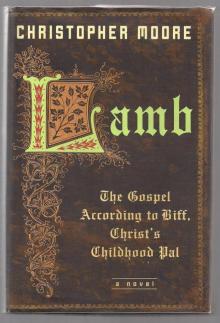 Lamb: The Gospel According to Biff, Christs Childhood Pal
Lamb: The Gospel According to Biff, Christs Childhood Pal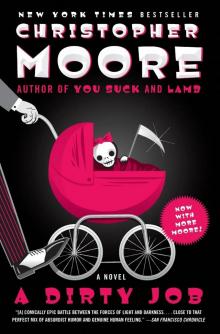 A Dirty Job
A Dirty Job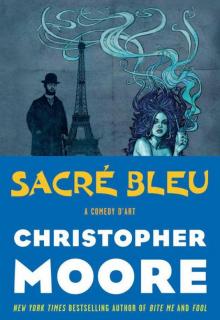 Sacré Bleu
Sacré Bleu Bite Me: A Love Story
Bite Me: A Love Story You Suck: A Love Story
You Suck: A Love Story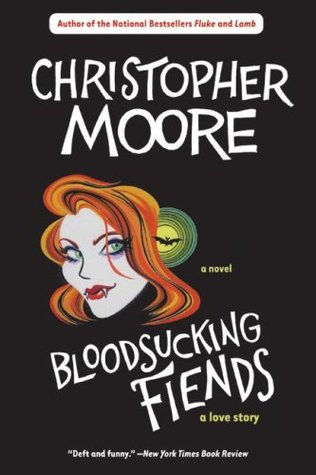 Bloodsucking Fiends: A Love Story
Bloodsucking Fiends: A Love Story The Stupidest Angel
The Stupidest Angel Coyote Blue
Coyote Blue The Lust Lizard of Melancholy Cove
The Lust Lizard of Melancholy Cove Secondhand Souls
Secondhand Souls Shakespeare for Squirrels
Shakespeare for Squirrels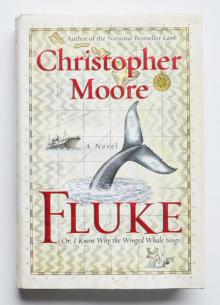 Fluke, or, I Know Why the Winged Whale Sings
Fluke, or, I Know Why the Winged Whale Sings Island of the Sequined Love Nun
Island of the Sequined Love Nun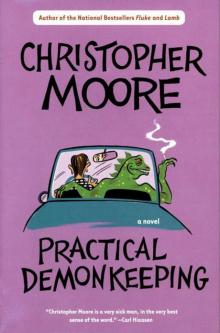 Practical Demonkeeping
Practical Demonkeeping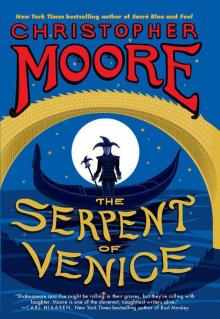 The Serpent of Venice
The Serpent of Venice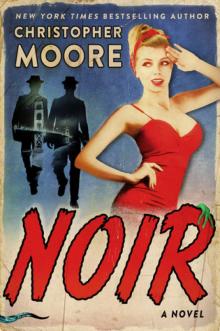 Noir
Noir Lamb: The Gospel According to Biff, Christ’s Childhood Pal
Lamb: The Gospel According to Biff, Christ’s Childhood Pal Bite Me
Bite Me Bloodsucking Fiends
Bloodsucking Fiends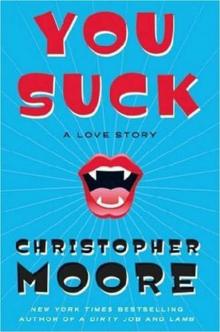 You Suck ls-2
You Suck ls-2 Bloodsucking Fiends ls-1
Bloodsucking Fiends ls-1 The Stupidest Angel: A Heartwarming Tale of Christmas Terror
The Stupidest Angel: A Heartwarming Tale of Christmas Terror The Lust Lizard of Melancholy Cove pc-2
The Lust Lizard of Melancholy Cove pc-2 You Suck
You Suck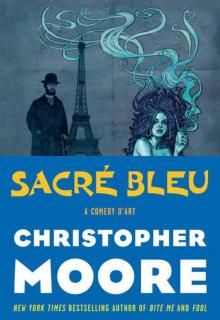 Sacre Bleu: A Comedy d'Art
Sacre Bleu: A Comedy d'Art Lamb
Lamb 1867
1867 Bite Me ls-3
Bite Me ls-3 Practical Demonkeeping pc-1
Practical Demonkeeping pc-1